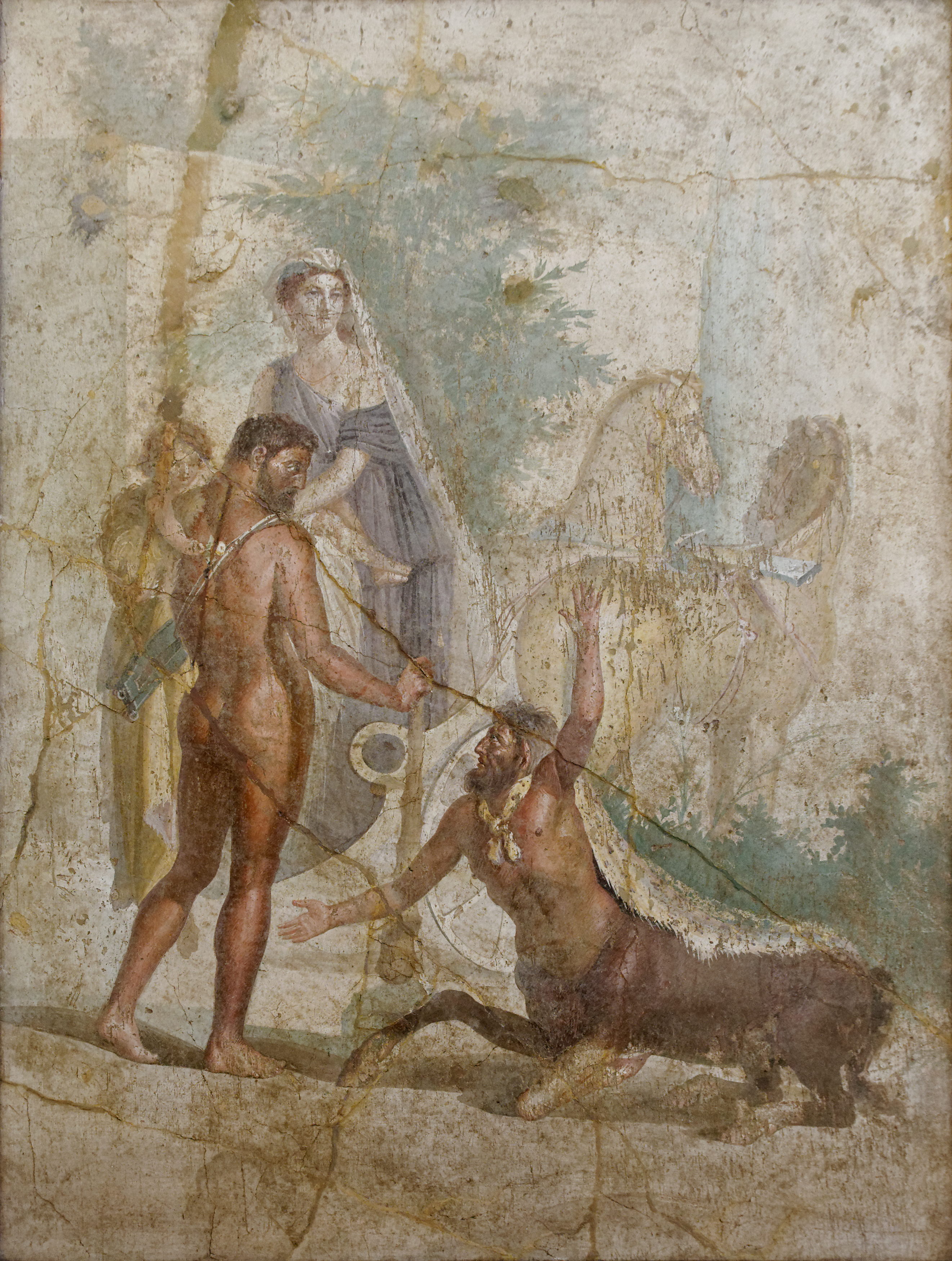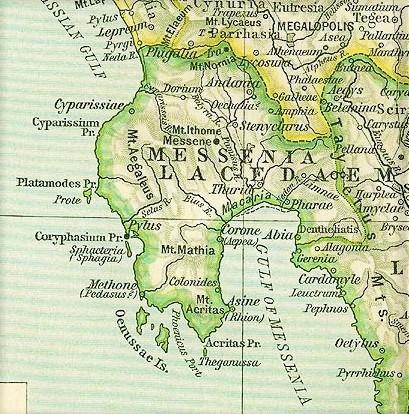|
Amyklai
Amyclae or Amyklai () was a city of ancient Laconia, situated on the right or western bank of the Eurotas, 20 stadia south of Sparta, in a district remarkable for the abundance of its trees and its fertility. Amyclae was one of the most celebrated cities of Peloponnesus in the Greek Heroic Age. It is said to have been founded by the Lacedaemonian king Amyclas, the father of Hyacinthus, and to have been the abode of Tyndarus, and of Castor and Pollux, who are hence called ''Amyclaei Fratres''. Amyclae is mentioned by Homer, and it continued to maintain its independence as an Achaean town long after the conquest of Peloponnesus by the Dorians. Conquest by Sparta According to the common tradition, which represented the conquest of Peloponnesus as effected in one generation by the descendants of Heracles, Amyclae was given by the Dorians to Philonomus, as a reward for his having betrayed to them his native city Sparta. Philonomus is further said to have peopled the town with c ... [...More Info...] [...Related Items...] OR: [Wikipedia] [Google] [Baidu] |
Amykles
Amykles () is a village in Laconia, southern Greece. It lies in the plain by the Eurotas (river), Eurotas river, 6 km south of Sparta, east of the Taygetus mountains, along the Greek National Road 39 from Sparta to Gytheio. It was named after the ancient town Amyclae, the ruins of which are situated 2 km northeast of the village. Population Ancient Amyclae According to some sources, the ancient town Amyclae ( - ''Amyklai'') was founded by Amyclas of Sparta, the son of Lacedaemon (mythology), Lacedaemon. In the second century AD, the traveller Pausanias (geographer), Pausanias was informed that the archaic site of Amyklai had its ancient origin as an Achaeans (tribe), Achaean stronghold that predated the "Dorian invasion", and modern archaeology has supported that view. The Bronze Age settlement lay on the slopes above the modern village of Amykles. It was conquered by the Spartans as the fifth of the surrounding settlements whose subjection initiated the history of Sp ... [...More Info...] [...Related Items...] OR: [Wikipedia] [Google] [Baidu] |
Artemis
In ancient Greek religion and Greek mythology, mythology, Artemis (; ) is the goddess of the hunting, hunt, the wilderness, wild animals, transitions, nature, vegetation, childbirth, Kourotrophos, care of children, and chastity. In later times, she was identified with Selene, the Lunar deity, personification of the Moon.Smiths.v. Artemis/ref> She was often said to roam the forests and mountains, attended by her entourage of nymphs. The goddess Diana (mythology), Diana is her Religion in ancient Rome, Roman equivalent. In Greek tradition, Artemis is the daughter of Zeus and Leto, and twin sister of Apollo. In most accounts, the twins are the products of an extramarital liaison. For this, Zeus' wife Hera forbade Leto from giving birth anywhere on solid land. Only the island of Delos gave refuge to Leto, allowing her to give birth to her children. In one account, Artemis is born first and then proceeds to assist Leto in the birth of the second twin, Apollo. Artemis was a kouro ... [...More Info...] [...Related Items...] OR: [Wikipedia] [Google] [Baidu] |
Heracles
Heracles ( ; ), born Alcaeus (, ''Alkaios'') or Alcides (, ''Alkeidēs''), was a Divinity, divine hero in Greek mythology, the son of ZeusApollodorus1.9.16/ref> and Alcmene, and the foster son of Amphitryon.By his adoptive descent through Amphitryon, Heracles receives the epithet Alcides, as "of the line of Alcaeus (mythology), Alcaeus", father of Amphitryon. Amphitryon's own, mortal son was Iphicles. He was a descendant and half-brother (as they are both sired by the god Zeus) of Perseus. He was the greatest of the Greek heroes, the ancestor of royal clans who claimed to be Heracleidae (), and a champion of the Twelve Olympians, Olympian order against chthonic monsters. In Roman mythology, Rome and the modernity, modern western world, West, he is known as Hercules, with whom the later Roman emperors, in particular Commodus and Maximian, often identified themselves. Details of his cult (religion), cult were adapted to Rome as well. Origin Many popular stories were told ... [...More Info...] [...Related Items...] OR: [Wikipedia] [Google] [Baidu] |
Relief
Relief is a sculpture, sculptural method in which the sculpted pieces remain attached to a solid background of the same material. The term ''wikt:relief, relief'' is from the Latin verb , to raise (). To create a sculpture in relief is to give the impression that the sculpted material has been raised above the background Plane (geometry), plane. When a relief is carved into a flat surface of stone (relief sculpture) or wood (relief carving), the field is actually lowered, leaving the unsculpted areas seeming higher. The approach requires chiselling away of the background, which can be time-intensive. On the other hand, a relief saves forming the rear of a subject, and is less fragile and more securely fixed than a sculpture in the round, especially one of a standing figure where the ankles are a potential weak point, particularly in stone. In other materials such as metal, clay, plaster stucco, ceramics or papier-mâché the form can be simply added to or raised up from the bac ... [...More Info...] [...Related Items...] OR: [Wikipedia] [Google] [Baidu] |
Apollo
Apollo is one of the Twelve Olympians, Olympian deities in Ancient Greek religion, ancient Greek and Ancient Roman religion, Roman religion and Greek mythology, Greek and Roman mythology. Apollo has been recognized as a god of archery, music and dance, truth and prophecy, healing and diseases, the Sun and light, poetry, and more. One of the most important and complex of the Greek gods, he is the son of Zeus and Leto, and the twin brother of Artemis, goddess of the hunt. He is considered to be the most beautiful god and is represented as the ideal of the ''kouros'' (ephebe, or a beardless, athletic youth). Apollo is known in Greek-influenced Etruscan mythology as ''Apulu''. As the patron deity of Delphi (''Apollo Pythios''), Apollo is an oracular god—the prophetic deity of the Pythia, Delphic Oracle and also the deity of ritual purification. His oracles were often consulted for guidance in various matters. He was in general seen as the god who affords help and wards off e ... [...More Info...] [...Related Items...] OR: [Wikipedia] [Google] [Baidu] |
Hyacinthia
The death of Hyacinthus was celebrated at Amyclae by the second most important of Spartan festivals, the Hyacinthia (Ancient Greek / ''Hyakínthia'') in the Spartan month Hyacinthius in early summer. Proceedings of Hyacinthia The Hyacinthia lasted three days. Their details have been passed down to us through the descriptions in Athenaeus and Didymus. The first day was given over to mourning for the death of the hero: sacrifices were offered to the dead, banquets were stark and without pomp or decoration, and the sacrificial breads were very plain. The second day was one of celebration for his rebirth. The young people played the cithara and the aulos, and sang of the glory of Apollo. Others participated in horse races. Numerous choirs competed in town, singing country songs and dancing. Amyclae was also the location of parades of carts decorated by the girls and women of Sparta. Numerous sacrifices were offered, exclusively goats, with the occasion of the κοπίς, kopis, b ... [...More Info...] [...Related Items...] OR: [Wikipedia] [Google] [Baidu] |
Maurus Servius Honoratus
Servius, distinguished as Servius the Grammarian ( or ), was a late fourth-century and early fifth-century grammarian. He earned a contemporary reputation as the most learned man of his generation in Italy; he authored a set of commentaries on the works of Virgil. These works, ("Exposition on Three Works of Virgil"), ("Commentaries on Virgil"), ("Commentaries on the Works of Vergil"), or ("Commentaries on the Poems of Virgil"), constituted the first incunable to be printed at Florence, by Bernardo Cennini, in 1471. In the ''Saturnalia'' of Macrobius, Servius appears as one of the interlocutors; allusions in that work and a letter from Symmachus to Servius indicate that he was not a convert to Christianity. Name The name Servius also appears as Seruius owing to the unity of the Latin letters V and U from antiquity until as late as the 18th century. Many medieval manuscripts of Servius's commentaries give him the praenomen Marius or Maurus and the cognomen Honoratu ... [...More Info...] [...Related Items...] OR: [Wikipedia] [Google] [Baidu] |
Conon
Conon () (before 443 BC – ) was an Athenian general at the end of the Peloponnesian War, who led the Athenian naval forces when they were defeated by a Peloponnesian fleet in the crucial Battle of Aegospotami; later he contributed significantly to the restoration of Athens' political and military power. Commanding the Athenian fleet Shortly after the Battle of Notium, Conon took over command of the Athenian fleet from Alcibiades, who had fled to Thrace. When the new Spartan navarch (commander-in-chief of the fleet) Callicratidas took over command from Lysander, he started an aggressive campaign against the Athenians in the Aegean. After taking Methymna in Lesbos, he sent a message to Conon, declaring that he would put an end to Conon's command of the sea. Soon thereafter, Callicratidas caught Conon's fleet of seventy ships at sea and pursued him towards Mytilene Harbor on Lesbos, where in the ensuing battle, Conon lost thirty ships. Conon drew the remaining forty ships up ... [...More Info...] [...Related Items...] OR: [Wikipedia] [Google] [Baidu] |
Teleclus
Teleclus or Teleklos (Greek: Τήλεκλος) was the 8th Agiad dynasty king of Sparta during the eighth century BC. He was the son of King Archelaus and grandson of King Agesilaus I. Pausanias reports that Teleclus' reign saw the conquest of Amyclae, Pharis and Geranthrae, towns of the Perioeci or "dwellers round about". Teleclus was killed during a skirmish with the Messanians during a festival at the temple of Artemis Limnatis, Pausanias 1918 Book 4, IV, 1-3. an event foreshadowing the First Messenian War The First Messenian War was a war between Messenia_(ancient_region), Messenia and Sparta. It began in 743 BC and ended in 724 BC, according to the dates given by Pausanias (geographer), Pausanias. The war continued the rivalry between the Achae .... He was succeeded by his son Alcmenes. Notes References * 8th-century BC monarchs 8th-century BC Spartans Agiad kings of Sparta Ancient Greeks killed in battle 8th-century BC deaths Year of birth unkno ... [...More Info...] [...Related Items...] OR: [Wikipedia] [Google] [Baidu] |
First Messenian War
The First Messenian War was a war between Messenia_(ancient_region), Messenia and Sparta. It began in 743 BC and ended in 724 BC, according to the dates given by Pausanias (geographer), Pausanias. The war continued the rivalry between the Achaeans (tribe), Achaeans and the Dorians that had been initiated by the purported Return of the Heracleidae. Both sides utilized an explosive incident to settle the rivalry by full-scale war. The war was prolonged into 20 years. The result was a Spartan victory. Messenia was depopulated by emigration of the Achaeans to other states. Those who did not emigrate were reduced socially to helots, or serfs. Their descendants were held in hereditary servitude for centuries, until the collapse of the Spartan state in 370 BC. Dates Pausanias' standard dates Pausanias (geographer), Pausanias says that the opening campaign was a surprise attack on Ampheia by a Spartan force commanded by Alcmenes, List of kings of Sparta#Agiad dynasty, Agiad king of Spa ... [...More Info...] [...Related Items...] OR: [Wikipedia] [Google] [Baidu] |






